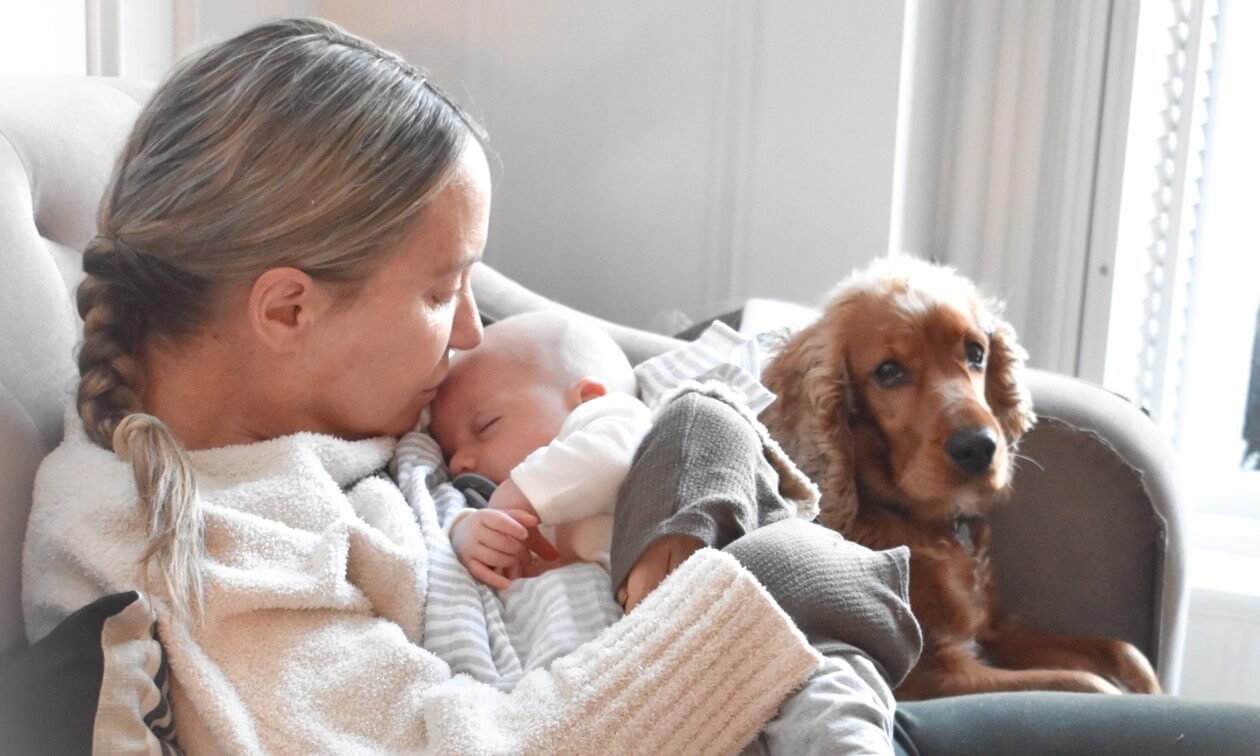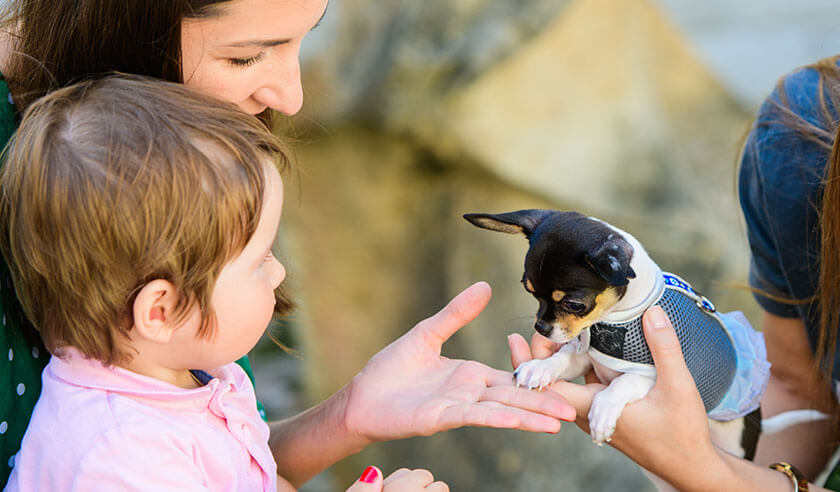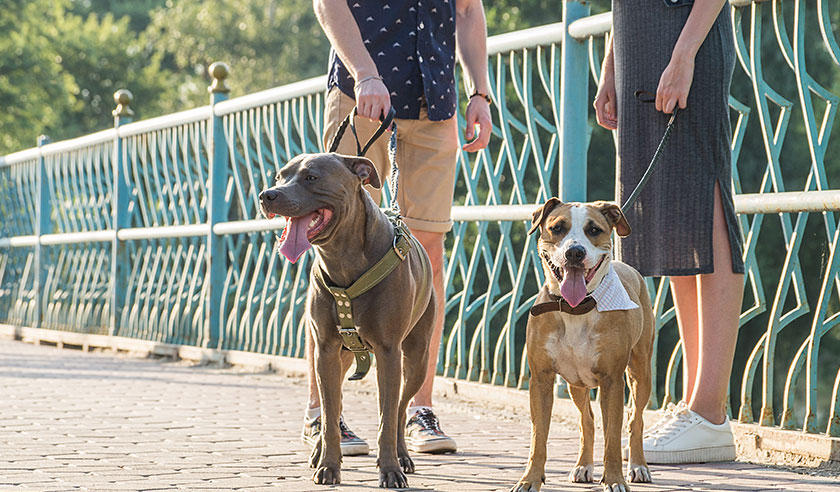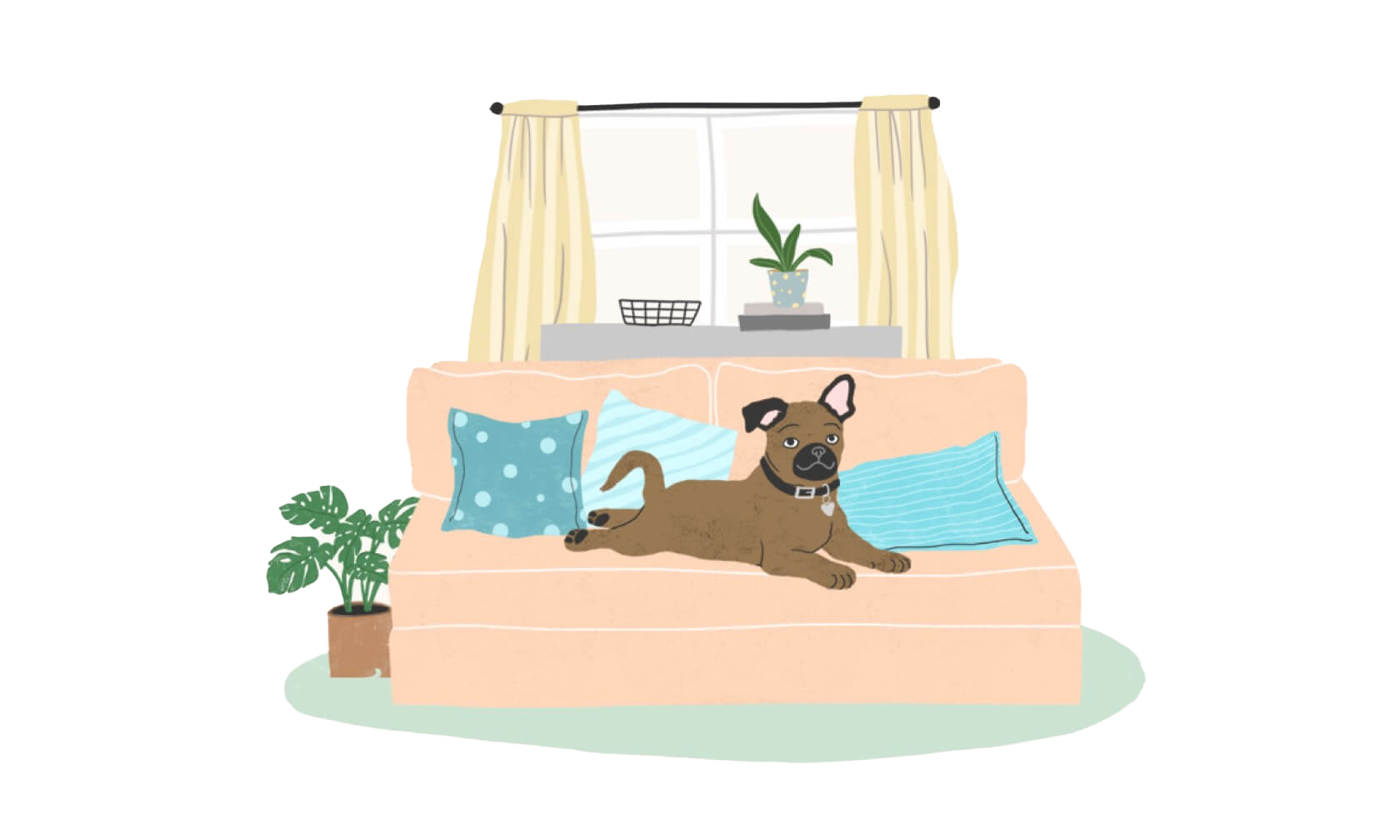Bringing home a new bundle of joy is an exciting time, but you also may be worried about how to introduce your dog or cat to your newborn baby. The sights, sounds, and smells of a new baby are a big change for your pet, and they will continue to experience changes as your child grows in the coming years. To help lessen the stress of having a new baby at home, there are things you can do ahead of time for your dog or cat.
Dogs, Cats, and Newborn Babies
While you may expect your pet to happily adjust to having a newborn around, it’s important to understand that many dogs and cats become stressed by a new baby in the home. Smell is incredibly important to dogs and cats to explore the world and identify friend from foe. Your home is about to be overwhelmed with new smells, from the baby directly to lotions and other products — and even the scent of the hospital in those early days. You’ll also be bringing new furniture, toys, and other baby items into the house, which can be unsettling. Lastly, the sounds your pet is exposed to every day are going to change dramatically with a baby. All of this can cause stress. A stressed pet is more likely to bite or scratch when they feel overwhelmed or unsure (and a newborn is at higher risk of more severe injuries from bites and scratches, whether intentional or accidental). Therefore, there’s is an inherent risk in allowing your dog or cat to interact directly with your baby.
Certified professional dog trainers will advise it’s more important to teach a calm and distanced settle behavior rather than focus on how to teach your dog to be gentle with a baby. By encouraging direct interaction between a dog and a newborn, the chances of your dog becoming startled, or triggered by a sudden movement or sound, are higher, and may result in a subsequent bite response.
Cats may react instinctively or in unexpected ways if they are startled or scared while near the baby. This isn’t about anger or spite over a new little person in the house — in fact, the startling event may not even be related to the baby. It’s more about their “fight or flight” nature when nervous. Making the nursery off-limits for kitty in this early stage is recommended. You can also work with your cat on training to go to a mat or designated settling spot if you’re so inclined.
While you may feel your pet would never bite your baby, never leave your dog or cat unattended with a newborn or young child.
Set Up Safe Spaces and Baby Gates
Create an area of your home where your dog or cat can go when they need to decompress. For dogs, this may be their crate, a playpen, or a separate room where the newborn does not go. Feed your dog in this area to create positive associations.
Having a quiet, private room for your cat is also helpful. Keep toys, a litter box, water, and other favorite resources in this space, so it’s a positive experience for your cat.
Consider installing a cat/dog door in this room to give them easy access without you having the added burden of playing doorkeeper.
Set up strategic gates or playpens throughout your home to give you an easy way to safely distance your dog from your baby that still allows your dog to feel close to you and not isolated.
Acclimate Your Pet to Baby Sights, Sounds, Smells, and New Routines
Prior to your baby’s birth, slowly introduce your pet to the different things they’re going to experience when baby comes home. During this entire process, offer your pet lots of positive reinforcement in the form of verbal praise, treats, petting, play sessions, or whatever they love. You want to reward their calm behavior and build positive associations with all these new baby-related experiences.
- Baby Items
Set out a baby carrier, for example, and let your dog or cat sniff it and get comfortable with it just sitting on the counter. Then help them get used to you carrying the carrier by calmly walking around with it throughout the day. If you’ll be using mechanical or electric items like swings or rockers, turn them on for a little while each day so your dog or cat can get comfortable with the sound and movement. - Sounds
Play baby sounds on your phone to help them adjust ahead of time. Start at a very low volume and gradually, over days, increase the volume. Don’t just focus on crying — laughing, squealing, and happy sounds are important too. - Smells
Start using a small amount of baby powders, lotions, and washes (particularly for cats) so they aren’t overwhelmed by new smells.
If possible, while your newborn is still at the hospital or after they’re home but still separated from your pet, place one of their used baby blankets in your pet’s core territory and leave a few treats on it. This can help your dog or cat get familiar with the new scent before introductions and start building more of those positive associations. - Routine
Your regular routine will change with a newborn baby, and while you can’t know exactly ahead of time what that might look like, think about whether you will need to adjust your pet’s daily routine. Will their mealtimes change? Will someone else be taking them for daily walks? Before baby arrives, start to introduce them to the new routine in small steps. Make sure to still set aside some time where they get undivided attention and interaction from you.
Initial Introductions Between Your Dog and Your Newborn
Make sure your dog has a nice long walk or other physical exercise before introducing them to your baby. You may consider having a friend, family member, or dog walker stop by to help with this step, as you’ll be occupied with your baby.
If possible, go inside without your baby first to greet your dog. This can help dogs get their initial excitement out of their system. Give them an opportunity to go potty and settle down for a moment. Let them sniff you and the scent of the newborn baby, even letting them smell a used baby blanket.
Then bring the baby in, whether in a carrier or in someone’s arms. Do not allow your dog to jump on you or the baby carrier. Calmly praise them if they show interest but avoid allowing them to become hyper-focused on the new baby. You can toss a couple of treats away from you and the baby to create positive associations and distance. As you go about settling in after arriving home, put the dog in their safe space with a puzzle toy stuffed with food or one of their favorite chews to enjoy in peace.
Never force interactions and always err on the side of caution. Further ensure safety by holding your baby on the opposite side of your body from the dog, such as when you are settled on the couch together or during family photos. Resist the temptation to try and pose your newborn baby and pet together for photos.
Initial Introductions Between Your Cat and Your Newborn
Consider putting your cat in their quiet room when you bring your newborn home so you can get settled without having to worry about what the cat is doing. Give them something fun to do in the room. It’s also a great idea to harness train your cat in advance and use it for your introductions. The harness gives you some control over the interaction. We all know it’s hard to hold a cat who doesn’t want to be held.
Allow your cat to come to your baby. Don’t carry the cat over or force them to interact. If they choose not to meet the newest family member right away or want to keep their distance, that’s just fine. Have some treats or a toy handy to reward very calm behavior or distract your cat if they get a little too close or are showing signs of anxiety.
It’s important to control the environment at this moment. You don’t want a lot of activity around the house, new people stirring around, or loud noises. This should be a calm time, so nothing unexpectedly startles the cat. End things on a positive note with a light play session or a food puzzle to distract them as you go about getting things settled.
As a side note, it’s incredibly important to keep your cat’s nails trimmed when you have a baby at home. They naturally get very sharp, and it’s easy for your cat to inadvertently scratch a baby’s delicate skin just through normal movement.
Each dog and cat is unique. There are different things to consider, such as the age of your pet and their history around children. Consider working with a certified professional to help you navigate the ins and outs of setting up your home prior to your baby’s arrival, how to safely introduce your pets to your newborn, and what to do if your dog or cat is experiencing behavioral issues after you bring your baby home. There are certified dog and cat trainers who specialize in helping pets and children acclimate to living together.
ZPC-01675





